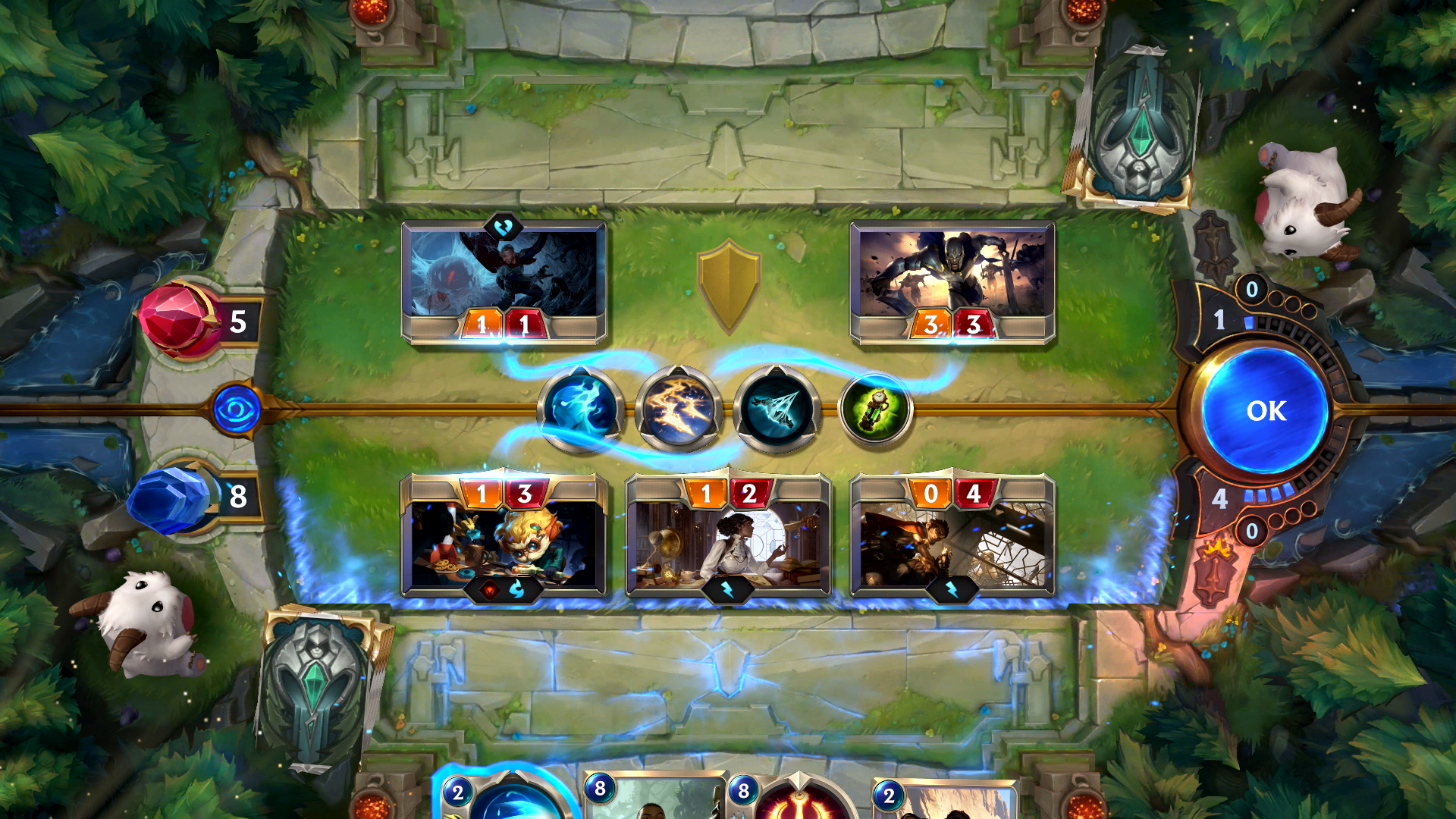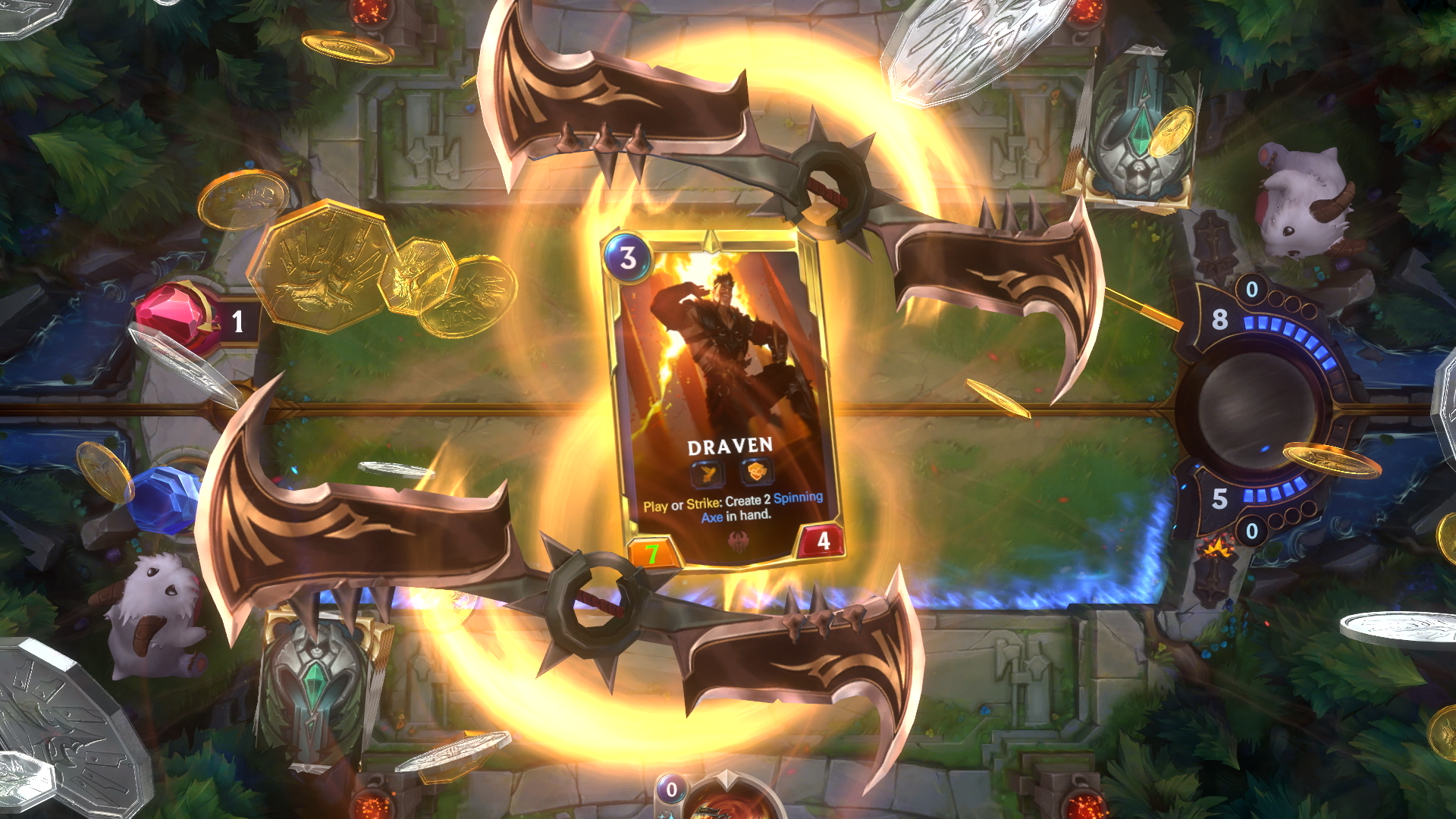Legends Of Runeterra Is An Accessible Card Game Even Non-LoL Fans Will Love

Platforms: PC, iOS, Android
Genre: Online Collectible Card Game Using League of Legends Settings
The last card games I played were Pokémon and Yu-Gi-Oh, only the latter of which was on a digital platform (and both of which were when I was a teenager). With that in mind, I went into Riot Games’ new League Of Legends spinoff, Legends Of Runeterra, not only with all the experience of a card game newbie, but also someone who has never played League Of Legends.
Would the learning curve of a game like this be too much for newcomers, especially for someone like me, who’s unfamiliar with both card games in general and League Of Legends lore? I can’t even name a single character from the popular MOBA title. Despite all of that working against me, I was ultimately surprised to discover that I actually enjoyed my time with Legends Of Runeterra.
Zero LoL Lore Knowledge? No Problem!

Going into Legend Of Runeterra, I expected to be clueless from the very beginning. Fortunately, the folks at Riot Games have crafted an easy-to-understand tutorial for newcomers to the franchise. You don’t need to be a veteran card game or League Of Legends fan to start playing Legends Of Runeterra.
In some games, tutorials are a hassle to play through, and they’re enough to make anyone lose interest before even starting the actual game. That’s not the case here, as the developers have provided not only basic tutorials, but also a lot of more in-depth ones called Prologues, each of which focuses on certain unique cards and Decks that players can try out for themselves.
I can’t remember the last time that I actually played through most of the tutorials available in a game, as it’s usually better just to learn as you play the game instead of going through a boring tutorial which the developers clearly didn’t put much effort into. Legends Of Runeterra is the opposite of that, and to my pleasant surprise, the game is quite easy to jump into.
I appreciate how minimalistic and intuitive the UI in Legends Of Runeterra is.
A clunky and messy UI would have intimidated and scared off potential players, which signifies that Riot Games really knows their stuff.
The core gameplay loop is simple enough to pick up and play, yet still full of depth and will take time to truly master.

There are essentially two types of cards; Champions/Units and Spells. Each player has 20 Nexus points (the player’s HP) and the objective is, of course, to reduce the opponent’s Nexus to zero. The Champions/Units have two values to take into account when playing them; the left number indicates its Attack value or damage output while the right number indicates its Health (which can be whittled down with Attacks).
You see, each player can either Attack or Block during their respective turns. The Attack token will switch from player to player, and the player who doesn’t have it in any given turn must prepare to Block the player’s Attack attempt (if they choose to do so). You can also Pass your turn, as sometimes it’s better to wait and take advantage of whichever (Attack or Block) is more in your favour, or to wait for your Mana to build up.
In order to use a card (be it Champions/Units or Spells), players need to put them into Play. If they’re in your hands, they’re useless (other than Burst Spells). However, players also require Mana (or energy points) to put them into play, with each card requiring different Mana points to put into play. Your Mana will gradually replenish and increase every few turns as the Attack token exchanges between players.
For example, sometimes I allow my opponent to Attack me without even attempting to Block him, as I don’t want to waste any Mana or Champions/Units during that turn. Despite that being a huge risk that results in me losing several Nexus points, I take the opportunity in my next turn to put better cards into play for a counterattack. This is integral to my specific strategy as many of my more powerful cards need some hefty Mana to put into Play.

The placement of your cards when Attacking or Blocking is vital. It’s essential to think carefully before using Spells as well since Burst Spells can be put into Play and used instantly, while Slow and Fast Spells require players to put them into Play for one turn before being able to unleash them. Even so, Slow Spells make up for that disadvantage by having powerful effects that can change the tide of battle.
In truth, there are a lot more layers to the gameplay and combat in Legends of Runeterra that I’m still learning more and more about the game with every match I play even after hours of playtime.
It manages to be complex without incurring too much of a steep learning curve, which is a godsend for newbies like me.
Less Is More

One of my favourite things about Legends Of Runeterra is the fact that players are limited to only choosing cards from two (2) different Regions in a single Deck. So far, there are only six Regions available in Legends Of Runeterra (with the recently-added Rising Tides expansion increasing that number to seven in total with the new Bilgewater Region).
I discovered that League Of Legends features a total of 17 Regions, so it’s wonderful that Riot Games is already working to add more of them.
Each Region comes with unique cards and abilities.
Being limited to only two Regions means that I can plan my strategy without being too shackled (if I could only use cards from one Region) or too spoilt for choice that it would intimidate newbies like me (if I had access to all six Regions for a single Deck).
Most of my starting cards were from Demacia and Freljord, so I chose to build my first custom Deck based on those two Regions. They work surprisingly well together, and I could already devise a decent Deck (for a newbie, that is). Well, their effects don’t clash at least, and that was good enough for my first custom Deck.
Satisfying Progression

To obtain new cards for your Decks, the developers have made it easier. Players can simply change the Region that they want to accumulate XP for, thus working towards getting new cards solely from that Region. This is especially great for anyone who chooses to focus on one or two specific Regions to build their Deck.
However, the caveat is that players will be limited to what Region they’ve chosen to ‘activate’ at any given time, which makes it harder to obtain cards from other Regions at the same time. A more random progression system would’ve mitigated that issue, but this focused progression is better suited for those who already want to stick to their favourite Regions and playstyle.
I know of many card games requiring players to spend actual money in hopes of obtaining decent cards from random booster packs.
That’s not a problem with Legends Of Runeterra, as the freebies you get with the daily and weekly rewards should be more than enough to build a decent Deck.
For instance, Wildcards allow players to craft any card of the same corresponding rarity (Common, Rare, etc.) for free.
Top Mobile Performance

To be expected from Riot Games, the animation quality in Legends Of Runeterra is very high. For instance, there’s a gameplay mechanic in the game where Champions can level up and evolve into stronger versions when certain criteria are met. For instance, Attacking at least twice with Garen will level him up, while Tryndamere has to actually die by being Attacked before he can level up.
The point here is that players are treated to a brief but intricate animated sequence whenever these Champions level up.
I always look forward to my Champions levelling up, as the short animation never fails to evoke a sense of power.
The animation quality also extends to other smaller aspects, like Guardians.
The very first Guardian players obtain by default is the League Of Legends unofficial mascot, Poro.
These Guardians don’t directly affect combat in any meaningful way, besides looking cute and cheering you on in matches. The Spells in Legends Of Runeterra also exhibit flashy visual effects that make use of particles and lighting. It’s amazing that my Sony Xperia XZ Premium from 2018 can still run the game at Ultra Quality smoothly.

Legends Of Runeterra feels incredibly-optimised, despite still being in Early Access when I was playing it. I didn’t encounter any crashes or severe issues, but of course, Riot Games was still adding and removing features in update after update during that period of time. In hindsight, that makes it even more impressive how stable the game is.
While I may not be well-versed in League Of Legends lore, I also adore how Champions and Units would often converse in unique dialogue and interact with each other, regardless of whether they’re from the same or different Regions.
It gives the game even more flavour, and it’s a feature that fans would be able to appreciate even more than I did.
A Story Mode Would Have Been Nice

If there’s one true flaw in Legends Of Runeterra that I can point out, it’s that the game would benefit from featuring some kind of single-player story mode or campaign of some sort.
That would certainly help newbies like me get more acquainted and invested in the lore.
Perhaps Riot Games could emulate Hearthstone’s Adventure Mode, where players start with a smaller and simpler deck while fighting computer-controlled opponents, with each victory giving them a chance to grow and strengthen their deck. These singleplayer-focused expansions would be exciting for those who much prefer single-player experiences over playing online against other human players.
A Card Game Even Non-LoL Fans Can Play

Playing Legends Of Runeterra hasn’t suddenly made me a fan of card games or League Of Legends. It’s not that great of a game, but it’s definitely a game that I enjoyed playing and wouldn’t mind returning to from time to time.
Look out, Hearthstone, Shadowverse and all its digital card game ilk, a new title is joining the fray, and it’s a good one.
Pros
- Very well-optimised…
- … which is incredible considering the high quality of the game’s flashy animation and visual effects.
- Easy to pick and play, thanks to interesting and well-made tutorials.
- Accessible gameplay and addicting progression system.
- Can easily acquire new cards without having to spend money.
- You don’t need to know League Of Legends lore to play this game…
- … but LoL fans still have a lot to appreciate, lore-wise.
Cons
- Lacks a single-player story mode or campaign.
FINAL SCORE: 80/100
Legends Of Runeterra was reviewed on a Sony Xperia XZ Premium via a review copy courtesy of Riot Games.



Leave a Comment